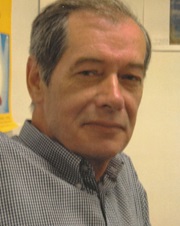Yuri Aleksandrovich Smirnov
 Lead Researcher of the Laboratory of Viruses Ontogenesis, Doctor of Medical Sciences, Professor.
Lead Researcher of the Laboratory of Viruses Ontogenesis, Doctor of Medical Sciences, Professor.
He graduated from the First Moscow Order of Lenin Medical Institute named after I.M. Sechenov in 1963 and completed the postgraduate program at the D.I. Ivanovsky Research Institute of Virology of USSR Academy of Medical Sciences in 1966. Candidate of Medical Sciences — 1966. Doctor of Medical Sciences — 1993. Professor – 1994. He worked as a consultant researcher at the Virology Laboratory of the National Research center of the Republic of Cuba from 1974 to 1976. From 1987 to 2010, he headed the Laboratory of Subviral Structures of the D.I. Ivanovsky Research Institute of Virology. For many years of work at the Research Institute of Virology, he has achieved the following results: determined the RNA secondary structure of the Sendai virus (1964) and demonstrated infectivity of the ribonucleoprotein of this virus (1968); demonstrated differences in polyribosome of normal cells and cells infected with the encephalomyocarditis virus and for the first time carried out RNA polymerase reaction with RNA of this virus (1971-73); for the first time demonstrated the change in the influenza virus HA amino acid sequence, when obtaining virulence to a new host (1988); for the first time demonstrated dependence of morphogenesis of influenza A viruses on M gen (1991); carried out a major cycle of studies of UV light impact on picornaviruses, orthomyxoviruses, alphaviruses and rhinoviruses (1983-93); obtained priority data on similarity of conservative conformational epitope in the HA stalk area of influenza A viruses (Н1, Н2, Н5 and Н6) (1999) and demonstrated high efficacy of monoclonal antibodies against this epitope for immune protection and influenza treatment (2000); obtained some new data on inducing protective heterosubtypic immune response to viruses of group A, when using adenovirus vectors expressing HA of the influenza A virus (Н5) (2010). Study results have been published (200+ articles) in national and foreign journals and presented at many international scientific conferences, and 4 patents have been obtained. 5 candidates of science have been trained.
